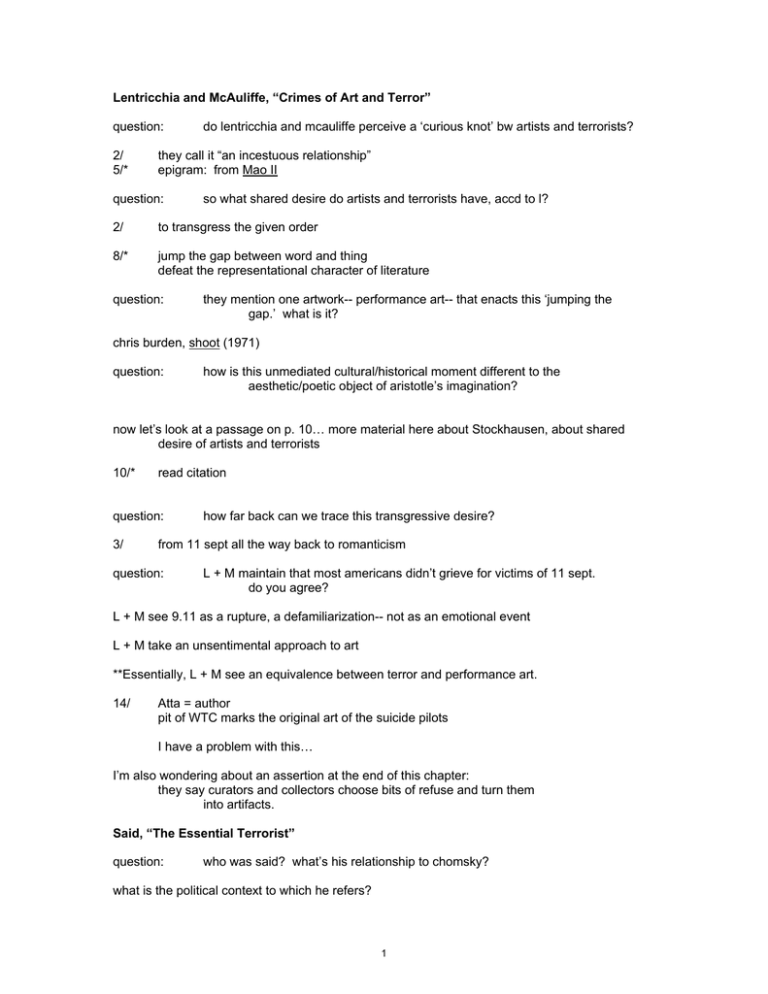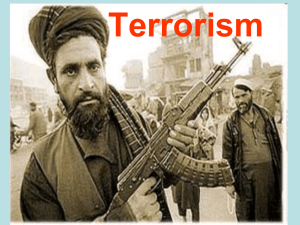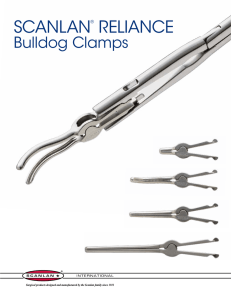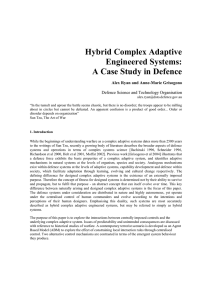Lentricchia and McAuliffe, “Crimes of Art and Terror” question:
advertisement

Lentricchia and McAuliffe, “Crimes of Art and Terror” question: 2/ 5/* do lentricchia and mcauliffe perceive a ‘curious knot’ bw artists and terrorists? they call it “an incestuous relationship” epigram: from Mao II question: so what shared desire do artists and terrorists have, accd to l? 2/ to transgress the given order 8/* jump the gap between word and thing defeat the representational character of literature question: they mention one artwork-- performance art-- that enacts this ‘jumping the gap.’ what is it? chris burden, shoot (1971) question: how is this unmediated cultural/historical moment different to the aesthetic/poetic object of aristotle’s imagination? now let’s look at a passage on p. 10… more material here about Stockhausen, about shared desire of artists and terrorists 10/* read citation question: 3/ how far back can we trace this transgressive desire? from 11 sept all the way back to romanticism question: L + M maintain that most americans didn’t grieve for victims of 11 sept. do you agree? L + M see 9.11 as a rupture, a defamiliarization-- not as an emotional event L + M take an unsentimental approach to art **Essentially, L + M see an equivalence between terror and performance art. 14/ Atta = author pit of WTC marks the original art of the suicide pilots I have a problem with this… I’m also wondering about an assertion at the end of this chapter: they say curators and collectors choose bits of refuse and turn them into artifacts. Said, “The Essential Terrorist” question: who was said? what’s his relationship to chomsky? what is the political context to which he refers? 1 153/* [top two graphs] establishment of israel; disenfranchisement of palestinians question: how does this relate to european history? explain orientalism: european subject established in opposition to oriental other ***heart of darkness question: 152/* how does this kind of binary opposition play itself out in said’s analysis of terrorism? read bottom paragraph Scanlan, “Plotting Terror” seeks affinities bw literary and terrorist plots identifies remnants of a romantic belief in the power of the marginalized to transform history sees tm as both: 5/* actual killing and a fictional construct defines tm “a symbolic act designed to influence political behavior by extranormal means, entailing the use or threat of violence” question: what’s the diff bw calling someone a terrorist and calling them a revolutionary? Scanlan’s general inquiry: the writer’s ability to understand and influence politics rel. bw language and violence the nature of power the impetus to resist question: who are the three classic authors she begins with? dostoevsky, james, conrad 11/ overview of 20th c. terrorism in Europe question: what are flashpoints? 1933 tm considered “outmoded as a revolutionary method” political activists thought that sustained strikes were more effective than sporadic violence 1945 postwar regimes were democratic enough that social change could be effected thru legitimate means 2 1950s one could see state socialism as “state tm” 1968 specters of intl tm resurface with student revolutions convergence of: aeroterrorism leisure flight media first global terrorist broadcast is when? 1972 olympics by mid-70s, RAF playing right to tv at the end of Scanlan’s intro, she considers “radical chic”... 3 what is that? MIT OpenCourseWare http://ocw.mit.edu 21G.061 Advanced Topics: Plotting Terror in European Culture Spring 2004 For information about citing these materials or our Terms of Use, visit: http://ocw.mit.edu/terms.




